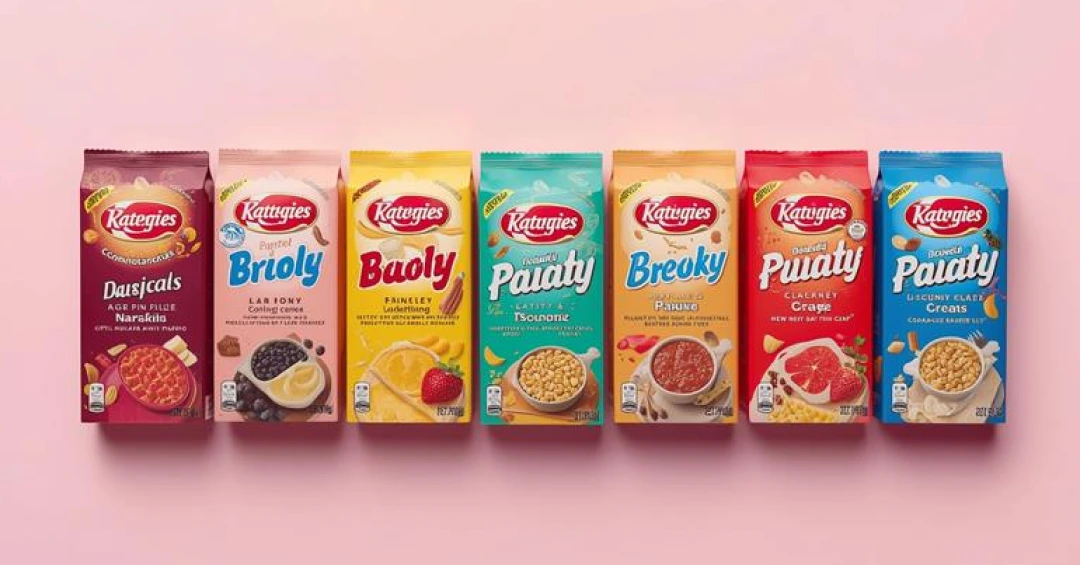The traditional 1D barcode on packaging artwork rarely gets much attention. It doesn’t store much data and requires precise scanning since information is encoded horizontally. This limitation has led to the rise of 2D barcodes, which offer increased data capacity and advanced encoding capabilities.
2D barcodes aren’t just a tech upgrade—they are improving how information flows through the supply chain, to retailers, and into the hands of consumers.
What’s driving this shift? A demand for more data, smarter packaging, and systems that can keep up with today’s fast-moving marketplace.
Why 2D Barcodes Are Taking Over
1D barcodes were built for a single function: to store a basic identifier that links to a database. That’s no longer enough. Here’s how 2D barcodes improve on their predecessors:
- They store more data: 2D barcodes hold much more than traditional barcodes – from batch numbers and expiration dates to even URLs.
- They are more accurate: 2D barcodes offer high accuracy. Scanners can read them even if they're partially damaged or poorly printed.
- They’re easier to scan: These codes allow for rapid, error-free scanning, which reduces friction in supply chains and retail environments.
Brands like Nestlé already use 2D barcodes to narrate product stories, track origins, or supply real-time allergen information. These new-age barcodes also enable quality control and traceability over a wide variety of products.
How Packaging Teams Can Prepare
As 2D barcodes get increasingly popular, packaging teams must lead the transition. It’s not just a matter of printing a new symbol. The entire artwork and packaging lifecycle needs to be ready for the change. Here’s where packaging teams must focus:
- Enable faster integration: Packaging needs to be agile when barcodes change. Everything from label templates to printer settings must adapt without slowing production.
Key questions to ask:- Can barcode updates be rolled out across hundreds of SKUs without starting from scratch?
- Are marketing, regulatory, and supply chain teams all aligned on the same platform?
- Overcome design and space constraints: Fitting a 2D barcode onto limited label space is tricky, especially given brand rules, legal guidelines, and multilingual packaging.
Key considerations:- Use dynamic templates to adapt layouts without frequent redesigns.
- Plan how the barcode impacts visual hierarchy—it should integrate seamlessly without confusing or overpowering the design.
- Ensure print quality: 2D barcodes contain complex data structures that require precise printing. Poor resolution, low contrast, or ink bleed can compromise readability.
Packaging teams must:- Work closely with print vendors to validate materials and ink behavior.
- Run digital prepress checks to detect barcode distortions before going live.
- Eliminate scanning issues: Packaging artwork that works in one market may fail in another due to scanner differences or lighting conditions.
Teams should:- Test barcodes across various devices—mobile apps, handheld scanners, and retail POS systems.
- Validate performance under different environmental conditions to ensure consistency across geographies.
- Ensure consistent data flow: Every 2D barcode must carry accurate, up-to-date information. Manual processes introduce risk.
To avoid errors:- Integrate artwork systems with centralized data sources.
- Work with regulatory and digital teams to verify that product links, batch details, and tracking info are always correct and secure.
What Comes Next
Shifting to 2D barcodes isn’t a one-time task, its an ongoing journey. Packaging teams need to think beyond implementation and plan for scale.
Here’s what should be on your radar:
- Enforce cross-functional collaboration: Involve regulatory, IT, supply chain, and marketing early in the process so that the silos do not slow down adoption.
- Ensure regulatory compliance: Build compliance into user workflows from the very beginning so that every barcode update meets required compliance standards worldwide.
- Invest in scalable artwork management systems: Adopt systems that grow as barcoding needs evolve and ensure stronger accuracy.
- Focus on compatibility: Ensure 2D barcodes work well across scanners, retail platforms, and consumer apps. Never assume consistency; test it.
- Create a feedback loop: Monitor scanning problems, consumer engagement, and regulatory updates on an ongoing basis and feed that information back into the artwork cycle.
- Consider future scalability: Embed 2D barcodes with future-proofing capabilities, so updates do not delay the timeline every time a new regulation or technology standard is rolled out.
The Bigger Picture
2D barcodes pave the way for more innovative packaging, better consumer experience, and tighter control throughout the product life cycle. Brands that treat this transition not as just another check on the to-do list but as a chance to rewrite packaging completely will succeed.
ManageArtworks helps packaging teams do exactly that. With a unified platform built for speed, accuracy, and collaboration, teams can move faster while keeping everything aligned: artwork, data, compliance, and quality.
Frequently Asked Questions
2D barcodes offer more data capacity, greater scanning accuracy, and the ability to link directly to dynamic product information or regulatory data.
Key challenges include label space limitations, print quality, scanner compatibility, and ensuring consistent, secure data flow.
ManageArtworks simplifies barcode updates, ensures data accuracy, accelerates artwork changes, and keeps all stakeholders connected on a single platform.





.webp)
















